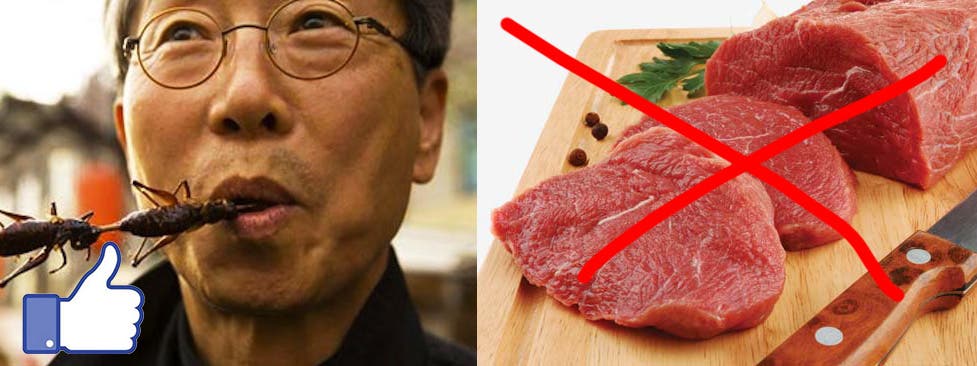Agriculture is in an awkward position where it both affects and is affected by climate change. According to the UN, agriculture accounts for up to 18% of all global carbon emissions, which is much more than all of the vehicles and airplanes collectively produce in the whole world. As human population is expected to grow to 10 billion by the end of the century, we will only cut down more forests to make way for a much larger population with a much larger appetite than today (hundreds of millions will leave poverty and thus will want access to a high-protein diet). Researchers at the University of Edinburgh and Scotland’s Rural College believe bugs could be a solution to our growing food supply problem.
A sustainable solution to a meaty problem
The researchers found growing insects and larvae for food is sustainable. Their research suggests that replacing half of the meat we eat worldwide with crickets and mealworms would cut farmland use by a third, consequently vastly reducing greenhouse gas emissions. The analysis suggests that even a marginal introduction of insects in people’s diets can have a significant impact, the team reported in the journal Global Food Security.
Specifically, halving global meat consumption and eating insects instead could free up 1,680 million hectares of land or a landmass 70 times the sizes of the UK. That might sound silly to some people but really, it’s doable with a bit of policy and good oversight. In 2014, 400 million fewer animals were killed for food largely because consumers from developed countries are eating healthier and are looking into vegetarian options.
“A mix of small changes in consumer behaviour, such as replacing beef with chicken, reducing food waste and potentially introducing insects more commonly into diets, would help achieve land savings and a more sustainable food system,” said Dr Peter Alexander of University of Edinburgh’s School of GeoSciences and Scotland’s Rural College
The researchers analyzed data from the UN’s Food and Agriculture Organization to compare the environmental impacts of conventional meat production with alternative food sources like insects, imitation meat, and lab-grown meat. Out of the three scenarios analyzed, the team found that insects and ‘fake beef’ like tofu are the most sustainable options because these require the least land and energy to make. Out of all the types of meat, beef is the least sustainable the researchers say.
A surprising find was lab-grown meat was found to be no more sustainable than chicken or eggs. Lab-grown meat requires an equivalent area of land but more energy than chicken meat or eggs.
This isn’t the first study that found an insect diet is desirable. Insects should become a staple of people’s diets around the world as an environmentally friendly alternative to meat, according to a report by the UK government’s waste agency, and the UN has listed bugs as a viable solution to our meat problem ever since 2013. Anticipating a demand for insect food as well as people’s reluctance to try gross-looking food (insects don’t taste bad — I’ve tried some), some scientists are already exploring ways of making insects more appealing. Worm meatballs and cricket falafels are some of the items on the menu.
On average, every person on Earth currently consumes 42.9 kilograms of meat per year, a statistic which includes babies and adults, meat eaters and vegetarians alike — basically everyone. In the United States, however, a country with a standard of living many people from the rest of the world aspire to, the average meat intake per person per year is 118 kilograms. If everyone in the world ate meat or consumed energy like the average American, we’d need a planet seven times larger than Earth to support ourselves.
Over the past 50 years, global meat production has almost quadrupled from 78 million tonnes in 1963 to a current total of 308 million tonnes per year. We might be in for yet another quadrupling by the end of the century at the current trend we’re seeing. Genetically modified organisms, programs meant at reducing food waste, and — why not — a rich diet of worms and all sorts of insects might get us through all this.










